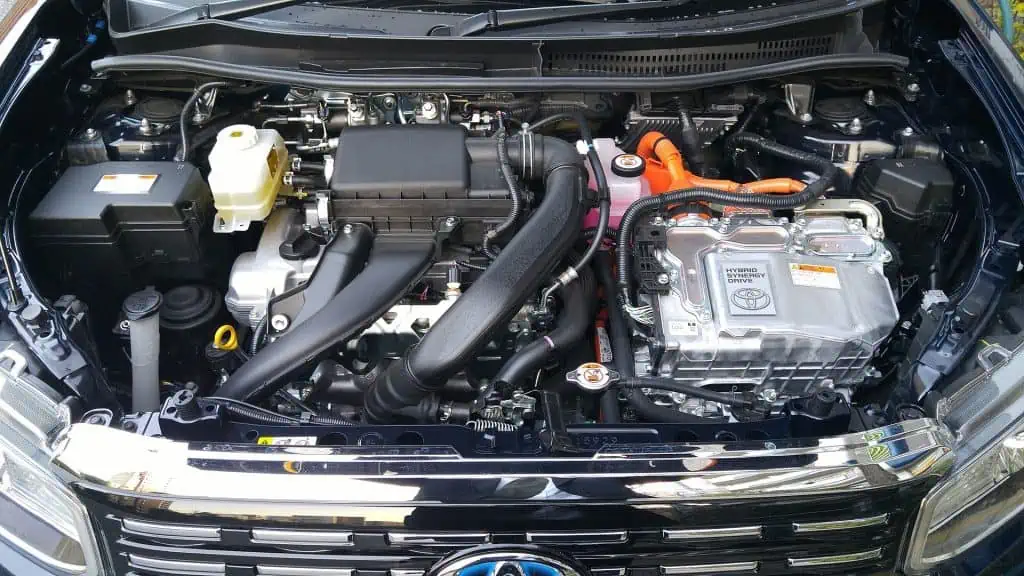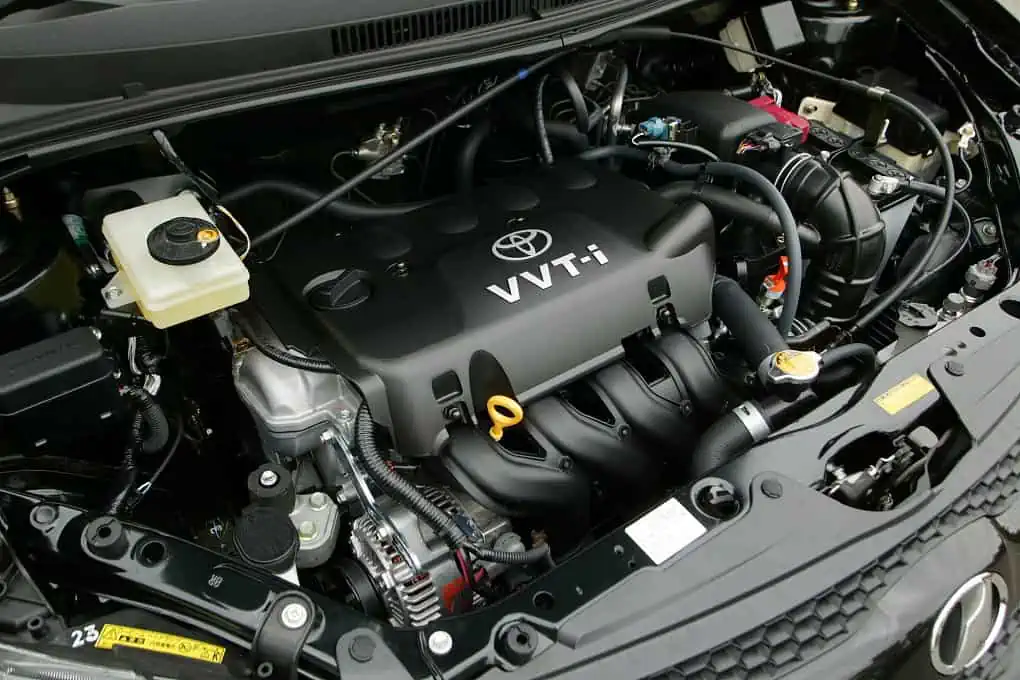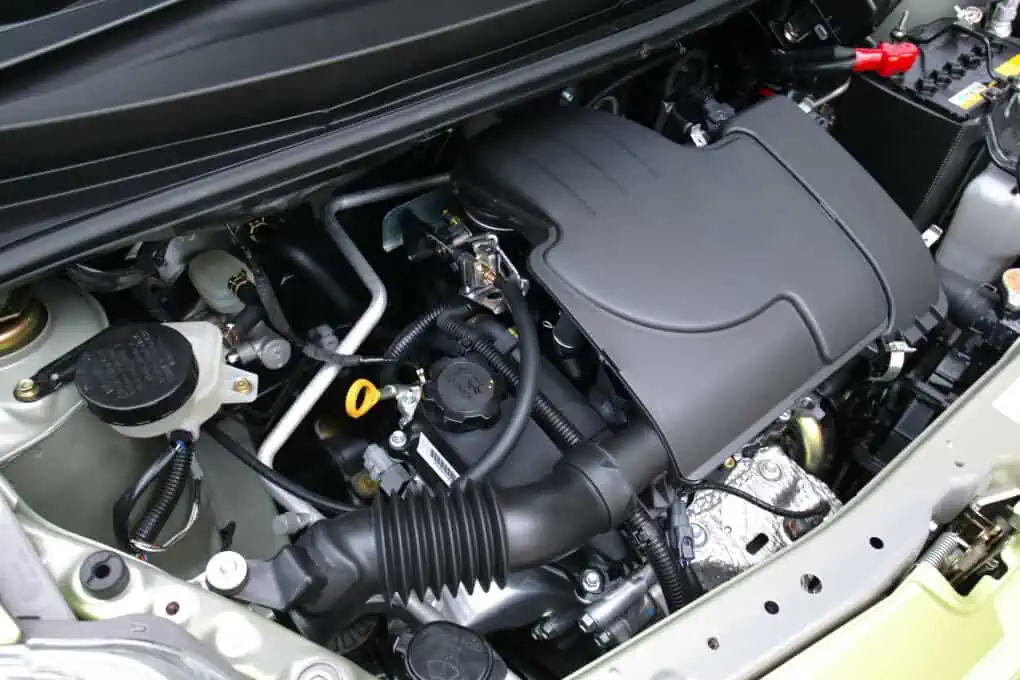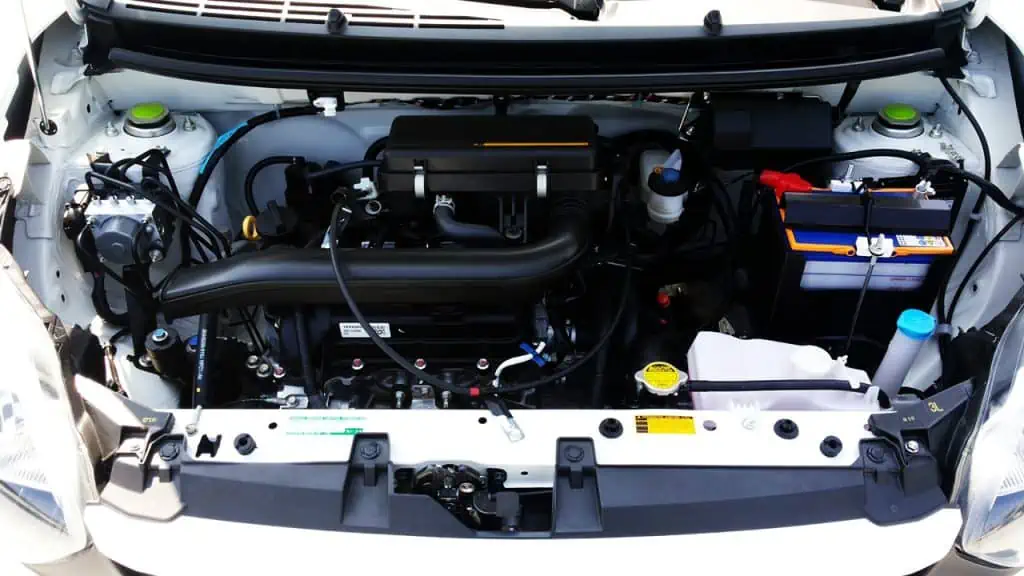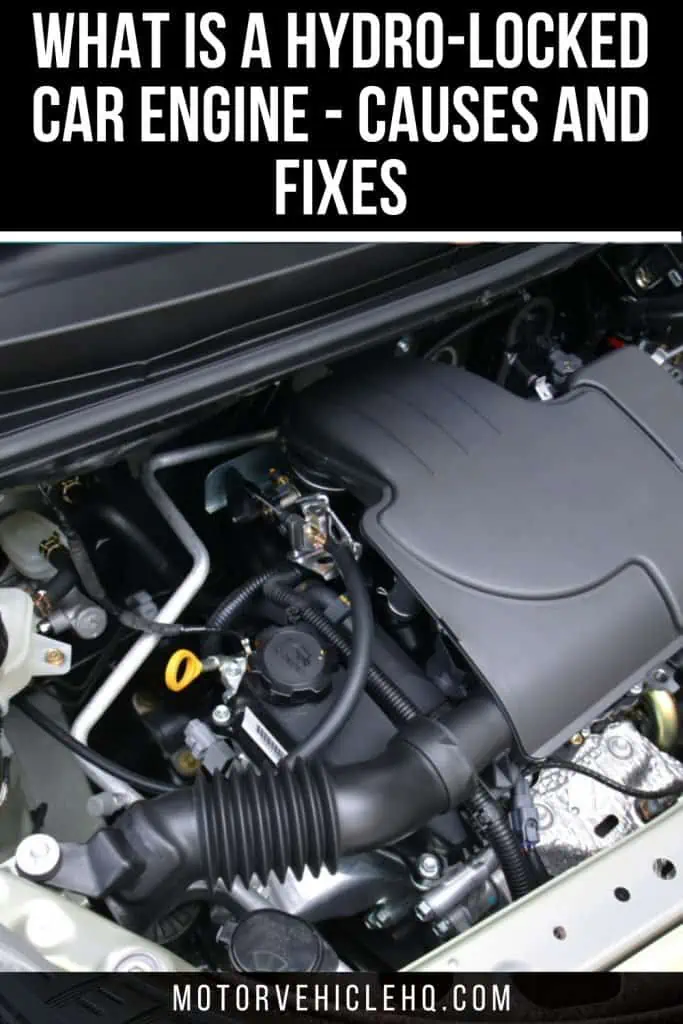Have you recently driven across a sizable puddle and are wondering if your engine is hydro locked? If this is the case and you are in this predicament, you have come to the correct place because there is a lot to discuss in this article regarding hydro-locked engines.
It is not a good thing to have a hydro-locked engine. This indicates that there is water inside the engine, which may be locked or full of water. This causes the engine to malfunction improperly, necessitating either engine replacement or engine repair.
You should therefore be careful where you drive, how you cross wide puddles, and how you start flooded autos.
Nobody wants to hear that water has entered the engine primarily because you will have a difficult time diagnosing the issue and these engines are quite expensive to fix.
But, we will go into greater detail on the costs associated with resolving the problem later in this article. What will we discuss in this post, then?
We’ll start from scratch by understanding what a hydro-locked engine is. The reasons for a hydro-locked engine will next be discussed, along with its signs and symptoms.
We’ll determine whether this engine can be preserved and what you can do about it afterward. So, keep reading if you want to discover more.
A Hydro-Locked Engine: What Is It?
Let’s first examine what a hydro-locked engine is in general terms before we get into more complicated subjects like the symptoms and the causes.
For those who are not automotive enthusiasts but want to understand more about the fundamentals of this subject, this will be quite helpful.
A typical car engine by CEFICEFI / CC BY-SA 4.0. The first symptom of a hydro-locked engine is the stalling issue. If you want to drive over deep water and cross your fingers, the result will almost always be the same whether the car’s engine is positioned extremely low. It won’t take much for the engine to ingest water and malfunction. You might be able to continue driving for 50 to 100 feet after this occurs before coming to a stop.
If you feel more knowledgeable, you can continue to the chapters after this one where we’ll go into more detail about the causes and solutions. If not, follow along with us for a while.
Internal combustion engines, as you are surely aware, are made to run on gasoline. The fuel and air combination is compressed by the pistons and ignited by the spark plug to produce power. The car won’t be able to run without the right gasoline-to-air-to-fuel mixture.
Imagine adding water to this combination, shall we? The water will do what? Water is not flammable, as we all know. but a gas that extinguishes the blaze.
Hence, when a significant volume of water enters the cylinders, the engine will just stop operating. Alternatively, as we stated, hydro lock.
This condition has irreparably harmed the engine. But what harm might result if water seeps inside the engine? That’s what we’ll discuss later, though.
The fact that this engine can no longer run is what matters. If it isn’t opened and fixed. Even so, sometimes these engines are sold at auction and are found to be internally rusting.
Thus, these engines will eventually be replaced and discarded. mostly as a result of the engine’s internal deterioration and delayed response time.
But what kind of harm might your engine sustain if it becomes hydro locked? See what happens next.
Damage to the Engine from Hydro-Locking
We acquired knowledge of hydro-locked engines. Something that novices will find to be pretty interesting. Let’s first examine the engine damage that will result from this condition before talking about the signs and reasons why it occurred.
What, specifically, would happen if water got inside your engine and caused it to hydro lock? Let’s get into more detail.
The cylinder walls will be damaged first if the engine continues to run in this manner. When there is water in some of the cylinders and the engine is only required to move the automobile 50 feet, these walls will soon become scarred.
Consider driving past a significant puddle while water is drawn into the cylinders. If you do this, the cylinders will eventually become damaged and useless due to the water.
The engine is the heartbeat of a car by CEFICEFI / CC BY-SA 4.0. A different sign of having a hydro-locked engine is the inability of the engine to turn over. It’s a sign that the engine is stuck. Because of this, if you try to spin the crankshaft over with a socket wrench, it won’t want to move at all. This indicates that the engine is completely frozen until each component has been disassembled and serviced.
Piston rods that are bent or damaged are the second most likely scenario. If you push the engine, as we explained in the last example, the engine piston rods will bend if there is water in the cylinders and they lock.
When the piston rods bend, the engine is effectively destroyed. Running an automobile after it has sucked up water is bad because of this. These swamped and locked engines are most likely never going to be able to start.
Rust is the third type of engine damage that could result from water damage. As you are aware, even though the engine is built of aluminum, certain parts, such as the crankshaft, camshaft, piston rings, and rods, can corrode and cause the engine to fail.
Because the engine contains water and the metal is exposed to it, rust develops almost immediately. Let’s now discuss the signs of a hydro-locked engine.
Which are the Common Symptoms Associated with a Hydro-Locked Engine?
Now that we are aware of the harm that water may do. Let’s talk about the signs of an engine that is hydro locked.
What signs would you look for to determine whether this engine is locked and won’t start? Let’s go into more detail on these in the subsequent chapters to learn more about the symptoms.
1. Stalling After Driving Into Deep Water
The stalling problem is the first sign of a hydro-locked engine that we’ll discuss. As we already talked about. The outcome will most often be the same whether the car’s engine is positioned incredibly low if you want to drive through deep water and cross your fingers.
It will be very simple for the engine to absorb water and break down. When this happens, you might be able to drive for 50 to 100 feet before coming to a stop.
You will then need to call a tow truck to tow the car to the closest shop so that it can be properly evaluated and, fingers crossed, be able to run once again. which, even if it does, is quite unlikely.
Nonetheless, if the condition is minor, it might work; who knows? Let’s now discuss the second symptom.
2. The Engine Fails to Turn Over
The inability of the engine to turn over is a different symptom that can also occur when you have a hydro-locked engine. So, what does this mean?
A car won’t start if the engine fails by Tennen-Gas / CC BY-SA 3.0. Another indication of a hydro-locked engine is a clicking noise you could hear when you try to start the car. This happens as a result of the car’s multiple sensors, which allow it to recognize issues with the engine directly. As a result, the engine is turning off its ability to crank to protect the starter and the cylinders from additional damage.
It indicates the engine is locked. Hence, the crankshaft will not want to move at all if you try to turn it over with a socket wrench. This means that until every component has been taken apart and serviced, the engine is fully frozen.
When you are searching for vehicles at car auctions that were flooded, this is frequently helpful. If the engine spins, you can test it this way. This engine cannot be salvaged if it is not spinning, at least not for enough money to be financially viable.
Generally speaking, buying a used engine is far wiser than having a flooded one repaired. Let’s now discuss the final indication of a hydro-locked engine.
3. When Trying to Start the Engine, It Only Produces a Clicking Sound
When you try to start the automobile, you may hear a clicking sound, which is another sign of a hydro-locked engine. Why does this occur, then?
This occurs because the car has numerous sensors that enable it to detect problems with the engine directly. Hence, the engine is turning off its capacity to crank to prevent further harm to the starter and the cylinders.
Even though the engine has battery power and you may believe that you may start it, you will still hear a click-click sound. Yet, you truly can’t because of this.
Which, don’t get me wrong, is a good thing. Before attempting to start the engine, it needs to be opened and inspected. More on that will be covered later. Let’s now look at some scenarios where a hydro-locked engine might occur.
What are the Main Causes of Hydro-Locked Engines?
Let’s now examine the reasons why engines become hydro locked. We will discover the circumstances that can cause the engine to self-lock and become unstartable.
Understanding the causes will be beneficial since you’ll be able to prevent situations like this from occurring and leaving you with a flooded engine that won’t start.
Not to mention how much money you will save by doing this. What then are the root causes? Let’s get into more detail.
1. Entering Deep Water In a Car
Driving into deep water is likely the primary cause of a hydro-locked engine. Many people make bad calls, which sadly results in high repair costs.
You simply cannot put a car into deep water without giving it some thought. Some automobiles’ airboxes sit relatively low, which will allow water to enter the airbox and soak up the air filter.
A Toyota 1KR FE engine by Tennen-Gas / CC BY-SA 3.0. A hydro-locked engine is probably the result of driving into deep water. Several people make poor decisions, which regrettably leads to large repair charges. An automobile cannot be driven into deep water without careful consideration. Because the airboxes on some cars sit rather low, water can get inside and soak up the air filter. Water will enter the intake and pass through the air filter if there is too much of it.
If there is too much water, water will enter the intake and pass through the air filter. Thus, visualize your intake as a vacuum cleaner that gathers air to power your vehicle.
Once the water has been collected, it enters the intake and travels to each of the cylinders.
Even a little water can quickly evaporate. Yet, if the water is too substantial. Your engine will become hydro locked. Therefore be wary of flooding and strong rain.
You simply can’t predict how deep it might go. Turning around and trying an alternate route can be preferable in some situations to going all in and damaging your engine. Let’s go on to the following reason now.
2. The Car Was In a Flood
Flooding is a highly likely additional cause of hydro-locked engines. And when I say flooding, I don’t mean driving through a lot of water. Yet while the car was parked, flooding occurred.
It is advisable to be aware of this issue and take appropriate action if you reside in a region that experiences frequent heavy rains and flooding.
This means that you shouldn’t park your automobile in a garage that is inclined since water will naturally flow down and gradually flood the vehicle.
Alternatively, even when cars are parked on the roadway, hurricanes can cause high water levels. These two scenarios are detrimental to your car. indicating that your car may flood and have an underwater engine.
Fortunately, if the airbox is the sole impacted area, you can clean it up and change the filter. But what occurs is that those whose car’s air box was flooded attempt to start their vehicles, causing an engine to become hydro locked.
You must refrain from doing that in any way. If you don’t want to ruin the engine, don’t start a submerged vehicle.
3. A Coolant Flowed Into the Combustion Chamber.
The coolant entering the combustion chamber is another cause of a hydro-locked engine. That is accurate. Your engine can also be internally ruined by coolant. Even though its purpose is to keep the engine cool and prevent overheating problems. What causes this, then?
Well, the head gasket had a significant breakdown, which is why this occurred. Head gaskets can fail and develop tiny leaks, causing your engine to gradually lose coolant.
But occasionally, the coolant might hydro-lock the engine entirely. If there is too much coolant in a particular cylinder at one time, the gasket will completely fail. The engine will hydro lock.
This type of engine’s disassembly reveals that just one or two cylinders contain any coolant.
Failure of the head gasket is what led to this. Fortunately, occasionally these mistakes can be corrected, and the issue can be resolved.
But, if the block where the coolant flowed through also has a significant crack, this hydro-locked engine will end up in a junkyard.
The engine of the 2014 Toyota Wigo G by Areaseven / CC BY-SA 3.0. Another very likely reason for hydro-locked engines is flooding. And by flooding, I don’t just mean having to drive through a lot of water. The vehicle was parked, yet flooding happened. If you live in an area where flooding and heavy rain are common, it is advisable to be aware of this problem and take proper measures.
Hence, if you find that the engine is overheating, be on the lookout for these overheating problems. It is crucial to take rapid action and make an effort to find a solution as soon as feasible.
If not, a new engine is required. Let’s check to see if a hydro-locked engine may be saved in the subsequent chapter.
Is It Possible to Fix a Hydro-Locked Engine?
Let’s try to rescue a hydro-locked engine now. The sort of hydro lock and the degree of internal engine damage that was caused throughout this process are the main determinants of this answer, which is that it depends on the question.
Say an engine was just partially buried in water. If the necessary repair is done in this situation, the engine might be preserved.
But, it must be finished swiftly enough to prevent internal engine rust. The entire engine needs to be taken apart, cleaned inside and out, and dried.
If an engine were to run into a large body of water, water would be drawn into the engine, and it would be operated for some time like this. Then it is likely that this engine cannot be saved.
Mostly because the engine functioned in this manner and has internal engine damage. The pistons are probably jammed up and the rods are bent. In this situation, you’ll probably need to get a brand-new engine.
But I’ll get to that later. So, in the chapter after this one, we’ll discuss how to try and resuscitate a hydro-locked engine. So, how does it work? See what happens next.
How Can a Hydro-Locked Engine Be Fixed?
How then may a hydro-locked engine be saved? The engine’s desire to turn over is determined by the damage. Here is what you will need to do if it won’t turn over.
The first step is to remove all of the spark plugs, suction water out of the cylinders with a syringe, and check that there is no water inside the cylinder.
The oil must then be drained as the next step. The oil within will likely resemble a milkshake-like consistency. Make sure to thoroughly drain it and clean everything you can.
The following step is to obtain Marvel Mystery oil and add it to each of the cylinders. Give it a day or two to soak. In addition to ensuring that you can release the pistons, this oil will stop rust.
Then, attempt to start the engine the following day. Obtaining a socket wrench and a large pipe will provide you leverage to accomplish this. It might initially not want to release. Nonetheless, the engine will eventually be unleashed if you persist.
The components of a car engine by Shmee150 / CC BY-SA 4.0. Another factor contributing to a hydro-locked engine is coolant entering the combustion chamber. That is correct. Coolant can potentially harm your engine from the inside out. Even though it’s there to keep the engine cool and avoid overheating issues. Well, a substantial breakdown in the head gasket is what caused this. Your engine may experience a head gasket failure and small leaks that gradually drain its coolant.
Remove the Marvel Mystery oil once the engine is free to spin and then fill the vehicle with engine oil. Make sure the oil is all over the place by turning the engine over a few times.
After that, try starting the vehicle. No significant issues ought to arise at first. Finished with hydro-locked engines.
Please keep in mind that not all engines are created equal; some may have more severe damage and necessitate extensive disassembly and machine work to restore them to working order.
How Much Does It Cost to Fix a Hydro-Locked Engine?
Let’s now look at the expense of repairing a hydro-locked engine. In addition, it is not inexpensive. Not at all cheap. primarily because engines that become hydro locked are irreparable and extremely difficult to restart.
Thus, if this occurs and, assuming there is no internal mechanical damage to the engine, you can usually get it operating for $900 or a little bit more. primarily because the fluids in the engine need to be cleaned.
Replacement of the oil is necessary, etc. This requires a lot of work, thus it may be expensive. You’ll probably find the best deal if you handle it yourself.
If it cannot be saved, a new engine must be installed. You will require a replacement engine for this, which may cost more than $3,000 in total.
This is not inexpensive. Because of this, it is better to avoid having a problem with hydro-locked engines. How can you go about doing that? See what happens next.
How Can You Guard Your Car Engine Against Hydro-Locking?
Let’s now look at ways to avoid having a hydro-locked engine. What could you do to stop this?
Being aware of your surroundings and making every effort to avoid any large water puddles that appear dangerous should be your first line of defense.
Choose a different route and turn your automobile around. By doing this, you can guarantee that your engine won’t become hydro locked.
Watch where you park your automobile as well. You can never predict when a major storm will occur and cause everything to be flooded.
If there is an inclined road accessible, parking your automobile there is always preferable. By doing this, you can ensure that your automobile won’t flood or have a hydro-locked engine issue.
2021 Toyota Raize Turbo Sport engine by オーバードライブ83 / CC BY-SA 4.0. An engine that has hydro-locked is not a good thing. This suggests that the engine may be water-locked or water-filled and that there is water within. This leads to incorrect engine operation, which calls for either engine replacement or engine repair. As a result, you should exercise caution when driving, navigating large puddles, and starting flooded vehicles. It is unpleasant to learn that water has gotten inside the engine.
The Conclusion
The topic of hydro-locked engines has been extensively discussed on this page. Initially, we gained knowledge of what a hydro-locked engine is and the potential harm that it might cause.
The signs and symptoms of this issue were then discussed. It may manifest as stalling, an inability for the engine to turn over, an audible clicking sound from the engine, or difficulty starting.
The causes of this issue were then discussed, including flooding, driving into water, and locking up due to a failing cooling system.
Finally, we discovered how to solve the issue and the associated expenditures.
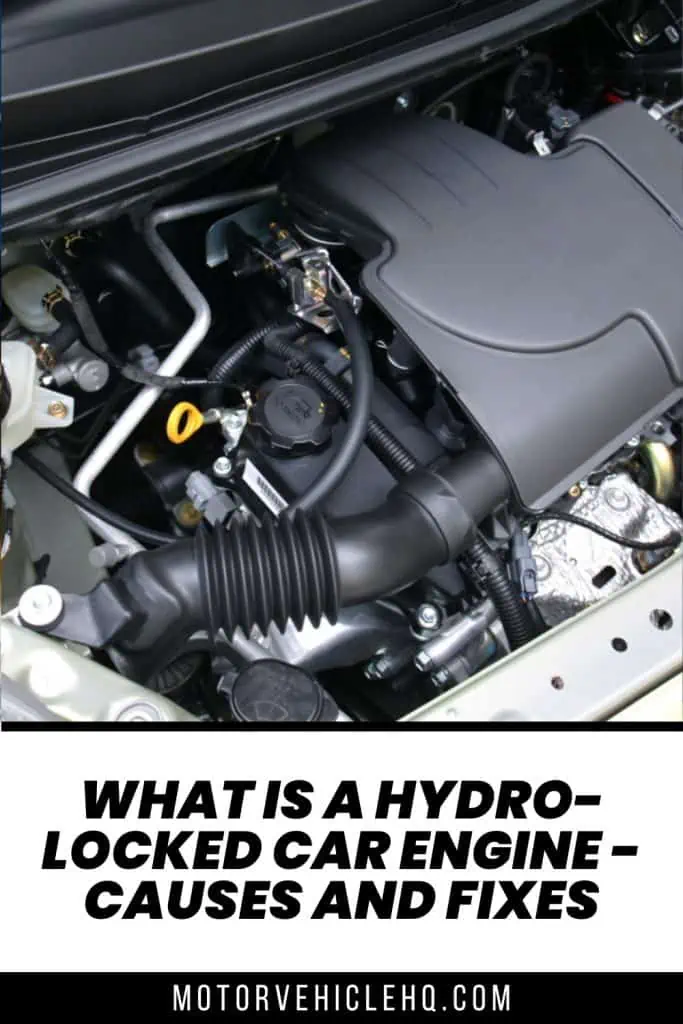
A Toyota 1KR FE engine by Tennen-Gas / CC BY-SA 3.0

Jim Wicks is the founder of MotorVehicleHQ. With over two decades of experience in the automotive industry and a degree in Automotive Technology, Jim is a certified car expert who has worked in various roles ranging from a mechanic, car dealership manager, to a racing car driver. He has owned more than 20 cars over the past 15 years. Ask him about any vehicle you see on the road and he can tell you the make, model and year. He loves the aesthetics of all things cars, and keeps his vehicles in pristine condition.
In his free time, Jim enjoys getting his hands dirty under the hood of a classic car or taking long drives along the country roads. His favorite car? A 1967 Shelby GT500, a true classic that, according to Jim, “represents the pure essence of American muscle.”
